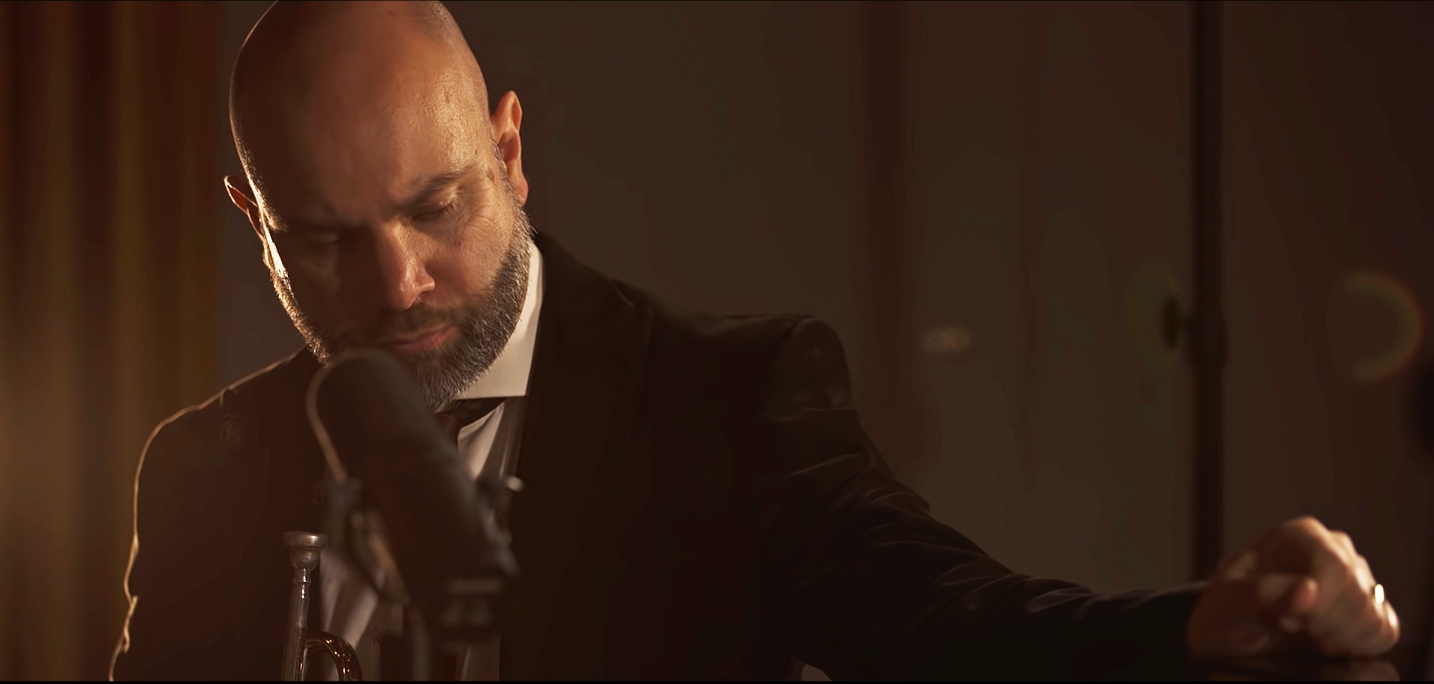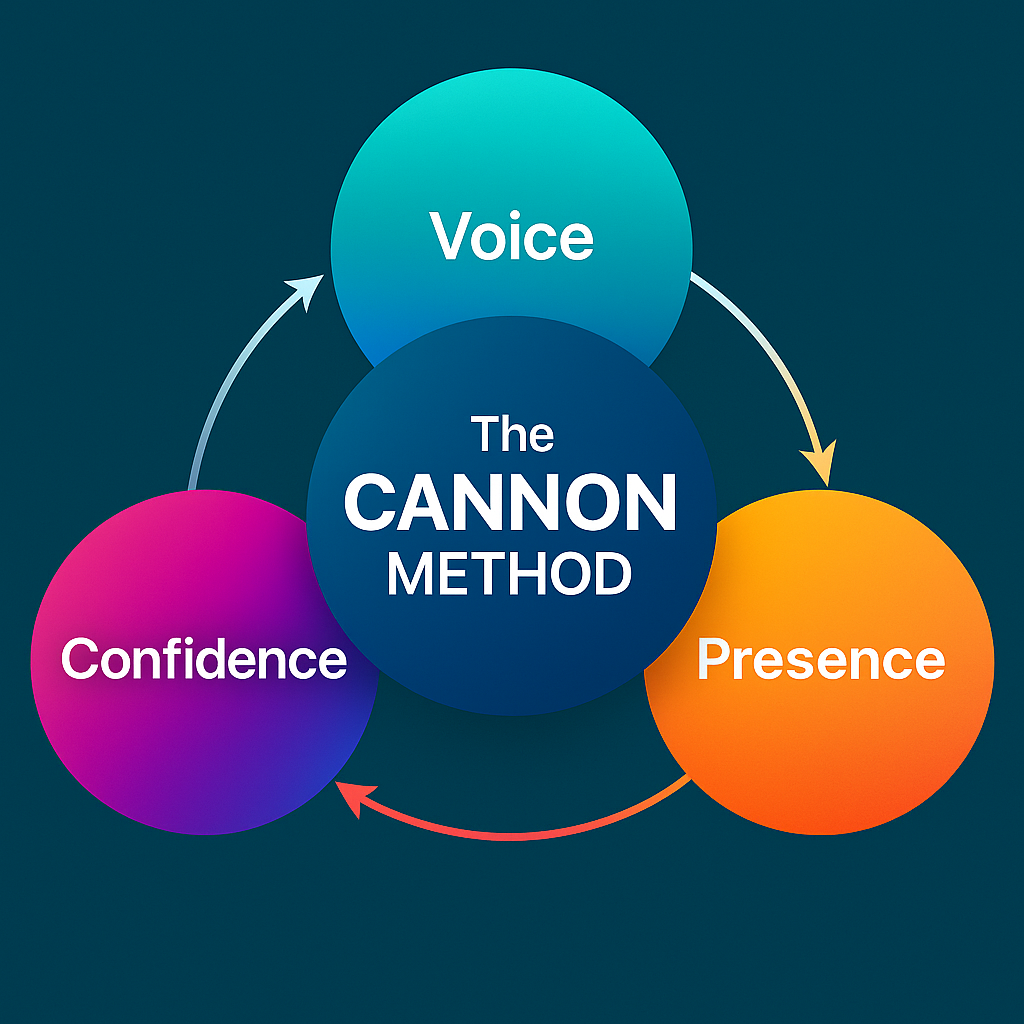
The purpose of speaking is connection.
When connection fades, leadership becomes performance.
About Jimmy Cannon
I’m an executive voice and communication coach helping leaders, entrepreneurs, and teams speak with confidence, clarity, and calm authority. Drawing on my background as a professional musician and voice educator, I created the Cannon Method® - a practical approach that blends vocal science, confidence-building techniques, and presence training to help people communicate with genuine impact.
Sometimes life forces you to find your real voice, even when you’ve spent years using one.
Like many, I hit rock bottom during the pandemic. Overnight, I lost my work, I lost my father, and for the first time in my life, the stage fell silent.
In that quiet, I made a decision. If I couldn’t perform, I’d go deeper - not just into my own voice, but into helping others use theirs when it mattered most.
That’s when I began my Master’s in Voice Pedagogy and shifted from performing to coaching. My goal was clear: to help professionals and leaders speak with confidence, authority, and composure under pressure.
During my first assignment, I kept thinking about one of my clients — a senior leader with an impressive career who struggled to speak when stakes were high. Each time he stood to talk, he felt a lump in his throat, a tightening he couldn’t control.
I recognised it as Globus Pharyngeus, a physical symptom that appears when anxiety and performance pressure collide. The more I worked with executives, the more I saw the same pattern — tight throats, shaky voices, words trailing off when it mattered most.
That discovery led me to train in Acceptance and Commitment Coaching (ACT-informed methods). I wanted to understand not just how the voice works technically, but how the mind and body respond to stress. Today, my work combines voice science with psychological flexibility, helping leaders regulate their nervous system, project calm authority, and communicate with clarity and sincerity in every situation.
Do people really listen when you speak?
Get your score and a plan to boost confidence, clarity, and presence
In 3 minutes, identify your strengths and blind spots, then get quick actions to speak with more impact.
- Spot the habits that hold you back
- Strengthen confidence and delivery
- Command attention and influence with ease
What I Do Now
I help business leaders, entrepreneurs, and teams deliver group presentations with confidence, clarity, and authority.
By mastering the one tool that connects everything, their voice, they unlock the ability to lead, inspire, and influence.
Your voice is more than sound. It’s the foundation of your authority, your confidence, and your ability to lead under pressure.
Through my Cannon Method®, I focus on three core pillars:
Voice
Master projection, articulation, and resonance so your words carry clarity, confidence, and authority.
Confidence
Build unshakeable self-assurance with strategies to manage nerves, calm your body, and perform at your best when it counts.
Presence
Command the room with your energy, body language, and delivery — whether in meetings, on stage, or on camera.
This work goes beyond presentation tips or performance tricks. It’s about transforming how you show up as a leader and communicator, so your voice reflects the calm authority you want to project.
My Background & Experience
Before starting my coaching career, I spent decades as a professional singer and saxophonist, performing around the world with artists like Tom Jones and Roger Taylor of Queen.
I have flown on private jets, recorded music for global brands, and performed on stages where commanding attention was not just necessary, but essential for survival.
However, performance is not solely about entertainment; it is about influence. It involves using your voice to engage, inspire, and lead. Skills that every high-performing professional needs.
Qualifications and Coaching Approach
My work combines vocal science, performance psychology, and evidence-informed coaching to help clients thrive under pressure, whether they’re leading teams, speaking to stakeholders, or presenting ideas to the world.
Qualifications and Credentials:
Postgraduate Diploma in Jazz Performance, Trinity Laban Conservatoire (Archer Scholar)
Master’s in Voice Pedagogy, University of Wales Trinity St David
ILM Level 7 Executive Coaching and Mentoring, a postgraduate-level qualification recognised for its depth, ethical standards, and focus on senior-level coaching
Acceptance and Commitment Coaching (ACT-informed training), non-clinical, evidence-based techniques for managing performance anxiety
As a coach, I create a calm, grounded space for reflection and growth. I work with senior leaders, entrepreneurs, and technical professionals who want to communicate with greater clarity, authority, and presence.
My coaching is practical, supportive, and ethically grounded. It draws on my background in voice pedagogy, performance, and ACT, while being informed by the ethical principles of the EMCC and the Association for Coaching.
I believe coaching is about listening generously, asking better questions, and helping clients find their own answers. It is not therapy or advice.
Coaching vs Therapy
It is important to clarify what coaching is, and what it is not.
My work is non-clinical and performance-based. I do not offer counselling or mental-health therapy, and my coaching should not be used as a substitute for those services.
Coaching focuses on present-moment awareness, skill development, and behavioural change in professional contexts. Therapy, by contrast, is designed to address psychological distress or trauma.
If a client is receiving therapy, coaching can complement that process by supporting personal effectiveness, communication, and leadership, but I always stay within professional boundaries.
Ethical Standards
I follow professional codes of practice that emphasise:
Clear boundaries between coaching and therapy
Informed consent and transparency about scope and fees
Confidentiality and respect for client privacy
Ongoing supervision and reflective practice
My aim is to bring integrity, compassion, and evidence-informed skill to every session, so clients feel safe, supported, and empowered to grow.
Final Note
I have lived both sides of this journey, as a performer holding audiences, and as a coach guiding leaders to project authority, credibility, and calm under pressure.
Through The Cannon Method®, I help ambitious professionals transform how they communicate, whether they are pitching investors, leading teams, or presenting to stakeholders.
Your voice is your most powerful asset. Let’s make it resonate, with confidence, authority, and presence.


